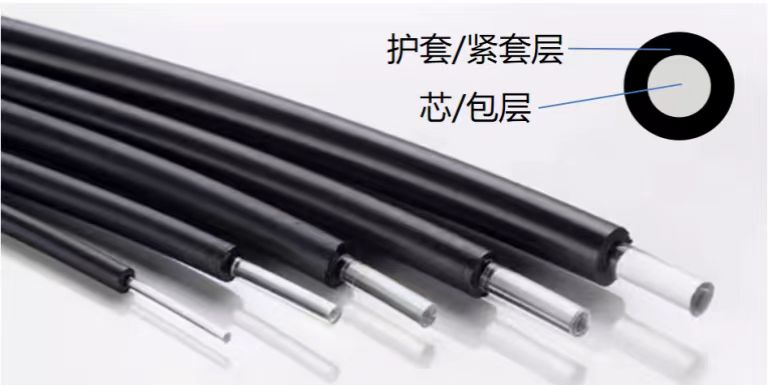What is plastic optical fiber?
Plastic Optical Fiber (POF) is an optical fiber made of polymer (plastic) material for transmitting optical signals. Compared with traditional quartz glass optical fiber, plastic optical fiber has the advantages of low cost, good flexibility, and easy installation, but the transmission loss is large, and it is usually suitable for short-distance communication and specific application scenarios.
Characteristics of plastic optical fiber:
Material: The core material is usually polymethyl methacrylate (PMMA, commonly known as acrylic) or polycarbonate (PC).
The cladding material is a fluorinated polymer with a low refractive index.
Diameter: The diameter of plastic optical fiber is larger (usually 0.5mm~1mm), which is much thicker than glass optical fiber (usually 0.125mm), so it is easier to connect and couple.
Transmission performance:
High loss: The transmission loss of plastic optical fiber is usually 0.1~0.5 dB/m (visible light band), which is much higher than quartz optical fiber (about 0.2 dB/km), so it is mainly used for short-distance (<100 meters) communication.
Low bandwidth: Due to the severe multimode dispersion, the bandwidth of plastic optical fiber is usually low, suitable for low-speed data transmission (such as 100 Mbps~1 Gbps).
Advantages:
Low cost: The material and production costs are much lower than glass optical fiber.
Good flexibility: Strong bending resistance and not easy to break.
Easy installation: No precision connector is required, it can be cut with scissors, suitable for DIY applications.
Safety: Non-conductive, suitable for environments with strong electromagnetic interference.
Disadvantages:
Not resistant to high temperatures (long-term operating temperature is generally below 85°C).
Susceptible to corrosion by chemicals (such as organic solvents).
Transmission distance and rate are limited.
Main application scenarios:
Short-distance communication: home network (such as HDMI replacement), car internal communication (MOST bus), industrial control (sensor signal transmission).
Lighting and decoration: used for advertising light boxes, decorative lighting, medical lighting (such as endoscope light guide).
Consumer electronics: audio equipment (TOSLINK interface used POF in the early days), optical connection of VR equipment.
Special environments: electromagnetic shielding places (such as MRI equipment), flammable and explosive environments (no spark risk).

Comments are closed